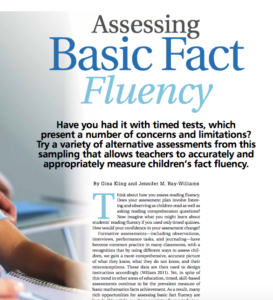It is the end of the school year. You’ve spent time and energy teaching various math concepts so that your students have a conceptual understanding of content. Students in your class have explored foundations of operations using concrete models and pictures. They’ve learned and applied strategies for solving various problems involving basic facts. Now it is time to assess their understanding. Have they really mastered their basic facts? What basic facts are they even required to master?
Basic Facts are an integral part of the elementary math standards. According to the Mathematics Florida Standards, standards for Basic Fact Fluency can be found in various grade levels.
Kindergarten students have to fluently add and subtract within 5.
First grade students have to fluently add and subtract within 10.
Second grade students are required to be fluent in addition and subtraction within 20 and know from memory all the sums of two one digit numbers.
Third grade students must fluently multiply and divide within 100 and know from memory all products of two one-digit numbers.
Traditionally, timed tests were used to assess basic fact fluency. However, many wonder if that is the best way to truly assess student understanding. Do timed tests offer limitations in truly capturing students understanding of the fluency standards?
According to the article Assessing Basic Fact Fluency, by Kling and Bay-Williams (2014), basic fact fluency can be defined as, “the efficient, appropriate, and flexible application of single-digit calculation skills”
If we simply use timed tests, can we see the flexible application of these skills? Are students missing out on opportunities to decompose numbers, or apply strategies such as make a ten, doubles, doubles plus one, or the distributive property? Without flexible understanding and efficient strategies, many students miss out on applying their math skills to greater numbers which may hinder their mental math capabilities.
Alternatives to Timed Tests suggested in the article include:
1. Interviews
2. Observations
3. Journaling
4. Quizzes
Just like when we teach reading, we learn so much more about the student as they read to us. They same should be true in math!
For more information on Assessing Basic Fact Fluency check out the link below!

http://www.uen.org/utahstandardsacademy/math/downloads/level-2/3-4-4-assessingbasicfactfluency.pdf